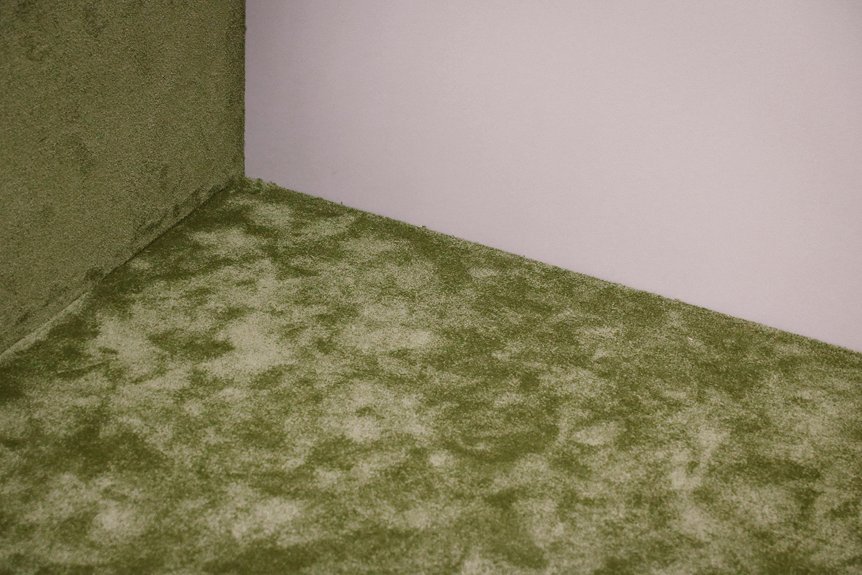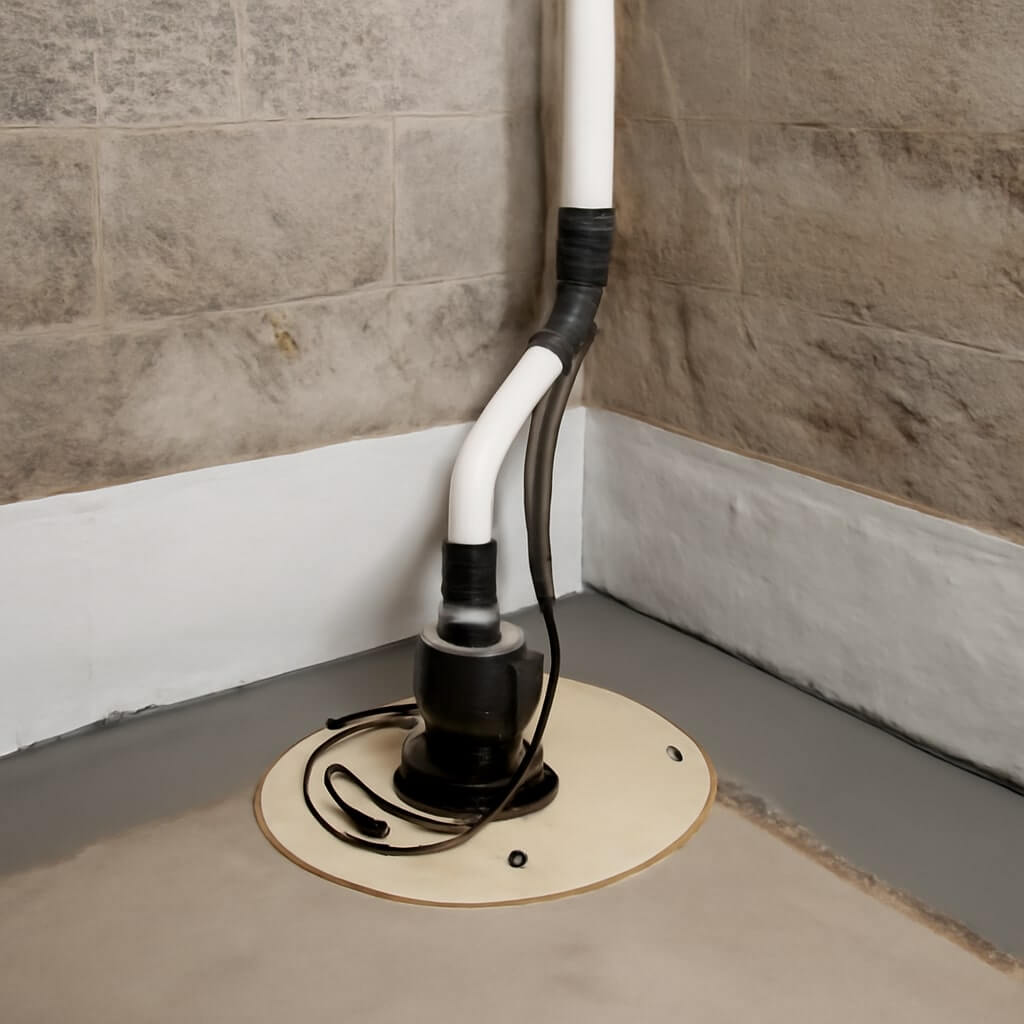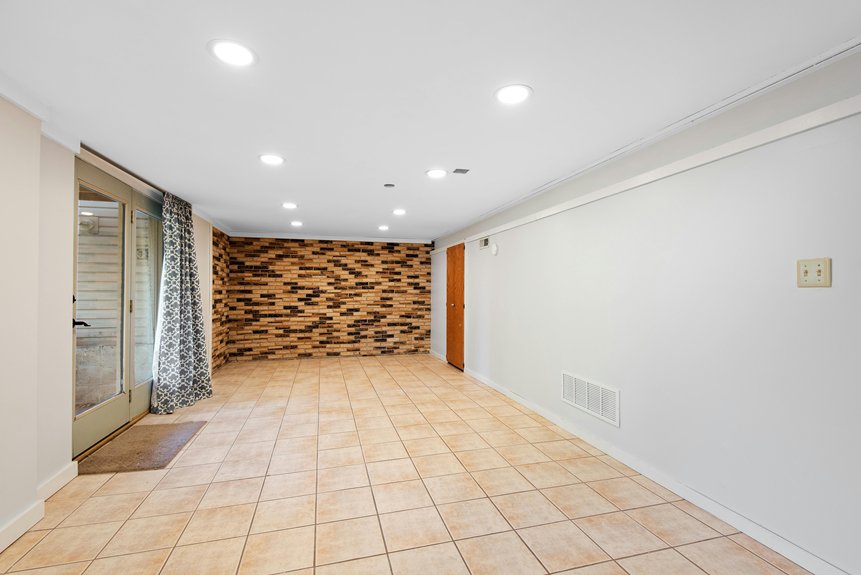If you’re considering using waterproof paint on your basement walls, you might wonder about its effectiveness. While it can create a moisture barrier and help prevent mold, its success hinges on how well you prepare the surface and address any existing water issues. Ignoring these factors can lead to disappointing results. So, what do you need to know to guarantee a successful application? Let’s explore the key aspects that can make or break your waterproofing efforts.
Key Takeaways
- Waterproof paint can help reduce moisture penetration on basement walls, creating a barrier against dampness.
- Surface preparation is crucial; clean and repair walls for effective adhesion of the paint.
- High humidity levels can hinder the drying and curing of waterproof paint, affecting its performance.
- Waterproof paint does not seal structural cracks, so addressing these issues beforehand is essential.
- Regular maintenance and inspections are necessary to ensure long-lasting effectiveness of waterproof paint in basements.
Understanding Basement Moisture Issues

When you’re dealing with a basement, understanding moisture issues is crucial for maintaining a healthy environment.
Common moisture sources include groundwater seepage, condensation, and plumbing leaks. These factors can elevate humidity levels, creating an ideal setting for mold and mildew growth.
Common moisture sources like groundwater seepage and plumbing leaks can lead to harmful mold and mildew growth.
To tackle these issues, you should regularly monitor your basement’s humidity using a hygrometer. Aim to keep humidity levels below 60% to prevent damage and health risks.
Proper ventilation, dehumidifiers, and fixing leaks can help control moisture effectively. Identifying and addressing these sources will guarantee your basement remains dry and safe for use.
How Waterproof Paint Works
Understanding how waterproof paint works is essential for effectively protecting your basement walls from moisture.
Waterproof technology relies on specialized paint composition that includes polymers and additives designed to create a barrier against water. When you apply this paint, it forms a flexible membrane that repels moisture, preventing it from seeping through the walls.
The unique formulation also allows the surface to breathe, reducing the risk of mold and mildew. By choosing the right waterproof paint, you guarantee that your basement stays dry, protecting both your home and your belongings from potential water damage.
Types of Waterproof Paint Available
Choosing the right waterproof paint is essential for ensuring your basement remains dry and protected. You’ll find several waterproof paint types available, including elastomeric coatings, epoxy-based paints, and masonry sealers.
Elastomeric coatings stretch to accommodate wall movement, while epoxy-based paints provide a tough, durable finish ideal for high-moisture areas. Masonry sealers penetrate the surface, blocking moisture effectively.
When selecting your paint, consider the appropriate paint application methods, such as brushing, rolling, or spraying, for even coverage. Each method has its advantages, so choose one that suits your skills and the specific surface of your basement walls.
Factors Affecting Waterproof Paint Effectiveness

Although you might think that any waterproof paint will do the job, several factors can greatly influence its effectiveness. Understanding these factors can help guarantee peak waterproof paint durability and better humidity control in your basement.
- Surface condition: Cracks or peeling can compromise adhesion.
- Moisture levels: High humidity can affect drying and curing.
- Temperature: Extreme temperatures may hinder paint performance.
- Application technique: Proper technique guarantees an even coat for maximum protection.
Proper Surface Preparation Before Application
Before applying waterproof paint, you need to guarantee the surface is both clean and dry.
This means removing any dust, dirt, or mold, and addressing any cracks or holes in the walls.
Properly preparing the surface not only enhances adhesion but also maximizes the effectiveness of the waterproofing.
Clean and Dry Surface
One key step in applying waterproof paint to your basement walls is verifying the surface is clean and dry. This means you need to focus on proper surface cleaning and thorough moisture removal.
Start by checking for any dirt, dust, or debris, and follow these steps:
- Use a stiff brush to scrub the walls and remove loose particles.
- Clean with a mixture of water and mild detergent to eliminate stains.
- Rinse thoroughly and allow the walls to dry completely.
- Use a moisture meter to verify humidity levels are low before painting.
Taking these steps will help your waterproof paint adhere properly.
Repair Cracks and Holes
To guarantee your waterproof paint adheres effectively, you need to repair any cracks and holes in your basement walls.
Start with crack sealing using a high-quality sealant to prevent moisture infiltration. Clean the cracks thoroughly, removing any loose debris before applying the sealant, ensuring it penetrates well.
For larger openings, use a suitable filler for hole filling; make sure it’s compatible with your wall material. After the repairs have cured, sand the surface lightly to create an even texture.
This preparation is essential, as it helps the waterproof paint bond properly and enhances its effectiveness.
Limitations of Waterproof Paint
While waterproof paint can offer a valuable first line of defense against moisture, it’s essential to acknowledge its limitations.
Here are some key points to evaluate:
- It doesn’t seal structural cracks, allowing water to seep through.
- Its effectiveness varies based on the surface preparation and application.
- It may peel or bubble if moisture issues aren’t resolved beforehand.
- It can’t replace proper drainage solutions or professional waterproofing methods.
Understanding these limitations of waterproof paint is vital for an effective effectiveness comparison with alternative basement waterproofing options.
Always assess your specific situation to choose the best approach for your basement.
Alternative Solutions for Basement Waterproofing
If you’re facing persistent moisture issues in your basement, exploring alternative waterproofing solutions can provide more extensive protection. Consider implementing drainage solutions and sump pumps to effectively manage water intrusion. Here’s a comparison of some popular options:
| Solution | Description | Pros |
|---|---|---|
| French Drain | A trench filled with gravel that redirects water away from your basement. | Effective in redirecting water. |
| Sump Pump | A pump that removes accumulated water from your basement. | Prevents flooding, easy to install. |
| Waterproof Membrane | A barrier applied to walls to prevent moisture entry. | Long-lasting protection. |
These options can work together for maximum effectiveness against moisture.
Maintenance Tips for Long-Lasting Results

To guarantee your waterproof paint delivers long-lasting results, pay close attention to surface preparation before application.
Regular inspections of your basement walls will help you catch any potential issues early, while using proper application techniques will maximize the paint’s effectiveness.
Following these steps can greatly extend the life of your waterproofing efforts.
Surface Preparation Importance
Proper surface preparation is essential for achieving long-lasting results when applying waterproof paint to basement walls.
Start by ensuring thorough surface cleaning to remove dirt, mildew, and previous paint. This step enhances paint adhesion, preventing peeling or bubbling.
Here’s what you should do:
- Inspect for cracks and repair them before painting.
- Wash walls with a mixture of water and mild detergent.
- Allow the surface to dry completely to avoid trapping moisture.
- Consider applying a primer designed for masonry for better adhesion.
Regular Inspections Required
While applying waterproof paint to your basement walls can greatly reduce moisture issues, neglecting regular inspections can lead to problems down the line. Conducting consistent checks helps you catch potential issues early, ensuring effective basement upkeep. Here’s a simple table to guide your inspection routine:
| Inspection Frequency | What to Check | Action Required |
|---|---|---|
| Monthly | Cracks and Peeling | Repair as needed |
| Quarterly | Moisture Levels | Reapply paint if needed |
| Biannually | Walls and Floors | Clean and inspect |
| Annually | Overall Condition | Address major issues |
| After Heavy Rain | Water Accumulation | Drain and dry |
Stay proactive for long-lasting results!
Proper Application Techniques
Achieving a successful waterproofing job on your basement walls hinges on meticulous application techniques.
To guarantee long-lasting results, pay close attention to your paint selection and application methods. Here are some essential tips:
- Clean the Surface: Remove any dirt, mold, or old paint before applying.
- Choose the Right Tools: Use brushes or rollers suited for textured surfaces.
- Follow Manufacturer Instructions: Adhere to drying times and layering recommendations.
- Apply in Ideal Conditions: Confirm the temperature and humidity are suitable for application.
Conclusion
In summary, while waterproof paint can be an effective solution for basement walls, its success hinges on proper surface preparation and addressing any underlying moisture issues. Remember, it won’t seal structural cracks and can fail on damp surfaces. To guarantee lasting results, maintain humidity levels below 60% and consider alternative waterproofing methods if needed. By taking these steps, you can create a healthier, more durable basement environment for years to come.




